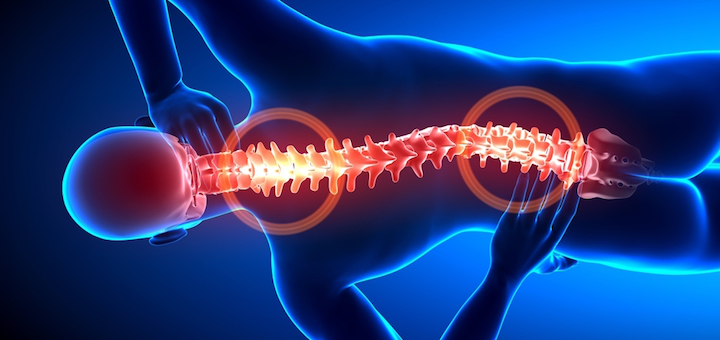It is always best to prevent than it is to cure. Patients with painful joints are recommended repeatedly to exercise and change their dietary habits. Lifestyle changes can strengthen their bones, joints and reduce the risk of them suffering from joint pain or any other bone-related disease.
Remember that your everyday routine has a huge impact on the longevity and the health of your joints. And the best part about this is that the same habits have multiple benefits beyond just one. For instance, if you eat foods that are great for strengthening your connective tissue, increasing bone density, and decreasing inflammation, this can help you prevent injuries and preserve your joints for a long and active life. Of course, it is very difficult to change your entire routine at once especially if you have been used to it for a long time. That is why experts and doctors always recommend that you start with your diet.
Here are the seven top food items that help reduce joint pain risk and increase mobility.
1.Omega-3 Fatty Acids
Fish oils and cold-water fish are an excellent source of getting your intake of Omega-3 fatty acids. These are essential nutrients for human health also referred to as the poly-saturated fatty acids. These important nutrients reduce inflammatory proteins, improve your brain function, lower risk of cardiac diseases, and diabetes.
You can find omega-3 fatty acids in sardines, halibut, salmon, and tuna. If you don’t like fish, another great source of Omega-3 is taking fish oil supplements routinely to make up for it.
2.Brassica Vegetables
The cruciferous veggies or Brassica are linked to the cabbage and mustard family. Think leafy greens such as arugula, purple cabbage, Brussels sprouts, broccoli, and cauliflower. The great thing about consuming these vegetables is that they block an enzyme that swells your joints. On top of that, they are filled with nutrients that maintain a healthy body and work on our overall wellbeing.
3.Fruits
Many people have stopped eating fruits because their dietician informs them of the high sugar content in some fruits. However, just like vegetables, there are certain fruits that reduce inflammation, and then there are some which have beneficial antioxidants.
Blueberries have a high percentage of anthocyanin which is not just a powerful flavonoid but also an agent of cutting inflammatory responses. Another popular anti-inflammatory fruit is apple which delivers extra benefits for your stomach health.
Pineapple is good for reducing joint pain thanks to the bromelain in it. If you fear the risk of osteoarthritis, this is the fruit that should make your daily menu. An interesting thing about pineapple is that bromelain is present in high density in the stem and the core. Therefore, a great way to consume it is to blend the core and enjoy a smoothie.
Another healthy fruit is tomato, which is filled to the brim with Lycopene, one of the top powerful antioxidants. What most people are not aware of is that cooked tomatoes have a higher lycopene content than uncooked tomatoes. Also instead of discarding the skin, leave it for cooking.
4.Whole Grains
Scientific studies have discovered that refined grains, such as those present in store bought pasta, white bread, and white rice are almost always successful in activating an inflammatory response in the human body. That is why a healthier alternative is the whole grain variety of bread and carbs.
For joint pain risk, we can always take a page from the book of recommended food items by the Arthritis Foundation. Their detailed list on the grains good for patients includes rye, barley, whole oats, and whole wheat. These grains are packed with anti-inflammatory compounds that can prevent joint conditions.
5.Turmeric
Turmeric has plenty of health benefits on top of being the spice that adds a wholesome flavor to curries. One of the beneficial compounds in Turmeric is Curcumin. Curcumin is proven to help one evade cancer, reduces inflammation, and has positive effects on blood pressure.
The University of Arizona conducted a research which discovered that it prevents joint deterioration. An interesting element of the research was that the Curcumin in turmeric displayed qualities of easing pain and worked on a level as effective as ibuprofen.
To get all the advantages of Curcumin, you can always add turmeric into your cooking rotation twice or thrice a week. A very important thing to note here is that Turmeric is a blood thinner, so it is important that you speak with your general physician before you take this regularly.
6.Hot Peppers
Peppers like Habanero and Serrano are filled with capsaicin, a component which has multiple benefits for the body like reducing pain, reducing inflammation, and preventing cancer. One way to understand which pepper to choose is to know that the hotter the pepper, the more capsaicin it harbors.
This means that mild peppers like poblanos and green peppers do not have a massive effect when it comes to relieving one’s joint pain. If you can tolerate a pepper, then don’t hesitate to add it in your daily diet.
If you dislike peppers then taking supplements is a good way to get the Capsaicin compound. Remember that supplements have a higher percentage of this, and therefore you should not overdo it.
7.Bone Broth
Bone broth contains amino acids chondroitin and glucosamine which are all amazing for maintaining healthy joints and bones. The gelatin-like substance in bone broth comes from the bone and imitates collagen. A lot of doctors debate that bone broth also triggers the regrowth of cartilages, however, there are many physicians who debate against it. You can take bone broth via a supplement to increase joint function and decrease joint pain.

